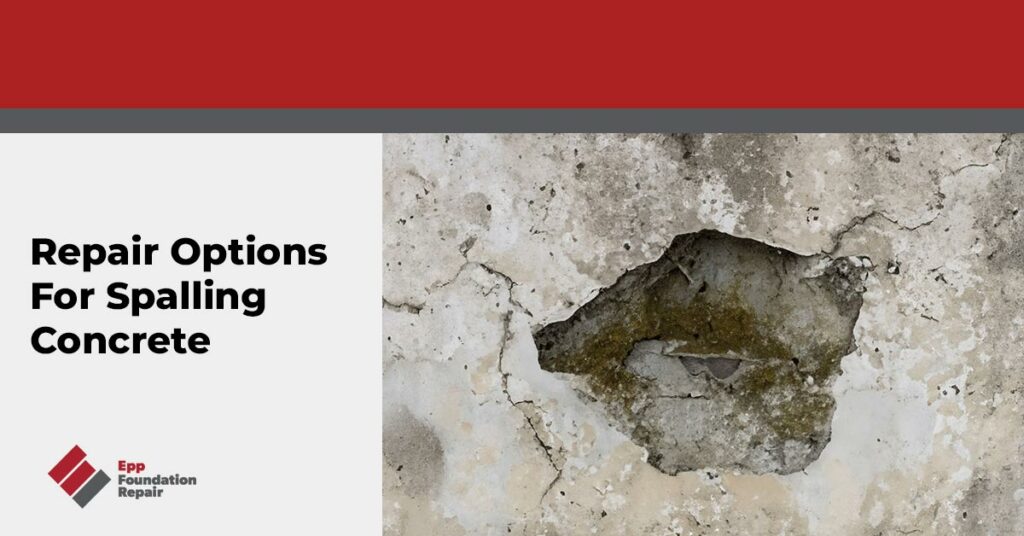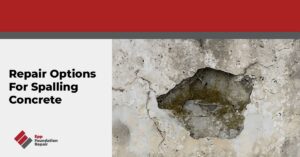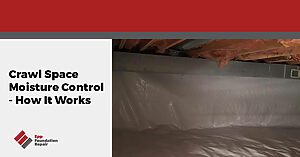Looking for information about spalling concrete? If so, you’ve landed on the right page because that’s what this article is about. We’ll review concrete spalling, what causes it, how it’s repaired, and how to prevent it.
What Is Spalling Concrete?
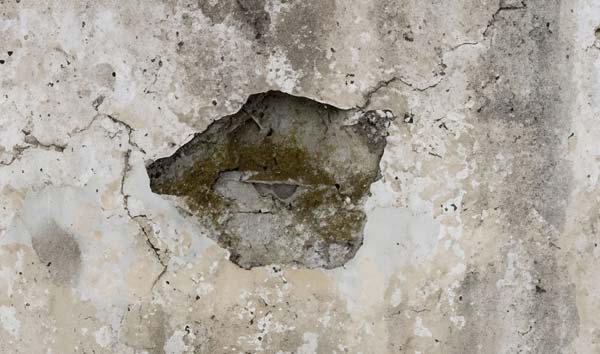
Concrete spalling is a condition involving the degradation of concrete surfaces. It’s characterized by the disintegration of the surface layer of concrete, resulting in the formation of pits, flakes, and cracks. Concrete spalling can lead to significant damage, compromising the structural integrity of anything built using concrete.
Why Does Concrete Spall?
Concrete spalls for various reasons, including the following:
- Freeze-thaw cycle – When water enters concrete and then freezes, it expands, putting pressure on the surrounding concrete. As the ice thaws, the pressure is released. Over time, this can lead to cracking and spalling. This process can be exacerbated when deicing salts are used, as they lower the freezing point of water and increase the frequency of freeze-thaw cycles.
- Corroded rebar – Exposure to moisture and air can cause rebar to corrode and expand, weakening the surrounding concrete and leading to spalling. This problem is exacerbated in coastal areas with salt air.
- Low-quality or improperly mixed concrete – Concrete consists of cement, water, sand, and aggregate, and if the composition ratios are improper, the concrete surface may be vulnerable to spalling. For instance, if the concrete mix has a low water-to-cement ratio, the concrete surface may become too dry and brittle, causing it to crack and chip under stress.
- Poor workmanship – Problems related to curing and finishing can also lead to spalling.
The effects of concrete spalling can be disastrous, as it can cause severe structural damage to buildings, bridges, roads, and other infrastructure.
How Is Spalling Concrete Repaired?
The following are the most common repair options for spalling concrete:
Concrete overlays
Concrete overlays involve the application of a thin layer of new concrete over the existing damaged concrete surface. This method can be relatively cost-effective and quick, but it only provides a temporary solution. Over time, the spalling will start again, and the repair process will need to be repeated.
Topical sealers
Topical sealers work by forming a surface film that protects the concrete surface from moisture and other damaging elements. However, topical sealers don’t penetrate deeply into the concrete. Therefore, they won’t stop the spalling process.
Penetrating sealers
Penetrating sealers are designed to penetrate deep into the concrete. While penetrating sealers can slow down the spalling process, they aren’t a permanent solution.
Concrete replacement
Concrete replacement is the best option for repairing spalled concrete and ensuring a long-lasting repair. This involves removing the damaged concrete and pouring fresh concrete in its place.
For more information about repairing concrete, see What Is Concrete Leveling?
How to Prevent Concrete Spalling?
The good news is there are things you can do to help prevent concrete spalling. These include the following:
- Use the right concrete mix – The quality of the concrete mix is crucial to its durability. A mix with the right amount of water, cement, and other materials is less prone to spalling.
- Cure the concrete properly – Curing is the process of keeping the concrete moist and at a specified temperature for a given time to ensure it achieves its maximum strength. Proper curing can enhance the concrete’s resistance to spalling.
- Protect the concrete from moisture – As noted above, moisture is a significant factor in concrete spalling. Make sure to seal the surface of the concrete with appropriate coatings that prevent water infiltration.
- Good maintenance – Regular maintenance will ensure the concrete remains intact over time. Any cracks or spalling should be repaired immediately to prevent further damage.
- Avoid deicing salts – Deicing salts can be corrosive to concrete, exacerbating spalling. If you must use them, use them sparingly.
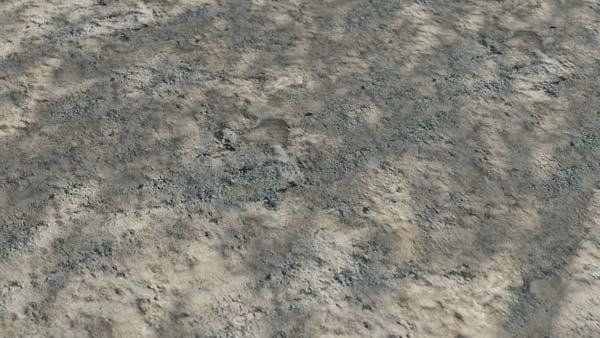
If you’re concerned about spalling concrete on your property, contact us today to schedule an evaluation and receive a repair estimate. We serve areas in four states: Nebraska, Iowa, Kansas, and Missouri.

